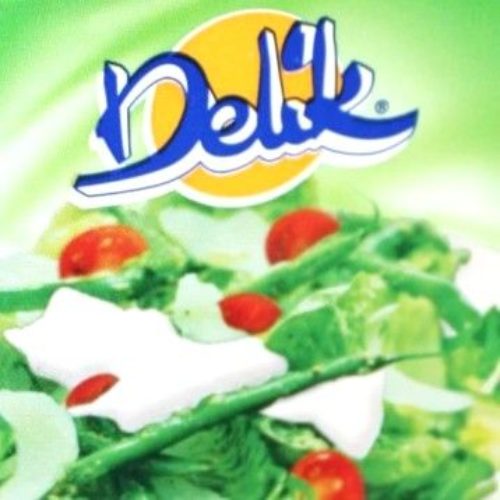The precise determination of production costs and conscious management of margins by dairy companies translate into profits or losses. In the case of ROTR, with significant development of the company in recent years, the monitoring of daily profitability of product sales, among other parameters, became a labor-intensive and error-prone process. The previously used data analysis tools, based on macros and calculations in MS Excel files, were no longer able to meet the increasingly advanced needs of the cooperative’s controlling department employees. In addition, the potential of data collected in the SAP ERP system implemented two years earlier was not fully leveraged. All these factors led to the decision to implement SAP Business Intelligence tools – the SAP BW data warehouse and SAP BusinessObjects reporting application.
“After the successful implementation of the SAP SPRINT system, it was time to optimize further areas of our activity. In the dairy industry, the data on margins or costs of manufacturing a single product is critical. Also our tools used so far for analyses became inefficient. Hence, the decision to expand SAP solutions to include analytical tools. SAP Business Intelligence will allow us to make decisions based on up-to-date and high-quality data, taking into account market changes. The main goal of the project was to optimize the finance and sales management", says Mariusz Trojakowski, CEO of ROTR Dairy Cooperative.
Clear goals
The project of implementing SAP BI solutions was entrusted – as in the case of the SAP SPRINT system – to 7milowy, a company from the BCC Group (now All for One Poland) that specializes in SAP projects in the SME market. Clear goals were set for the partner. The main goal was to integrate data from different areas of the SAP ERP system into a single repository that would enable this data to be jointly reported in a simple and transparent way. From the point of view of ROTR, an important part of the project was to integrate non-SAP data that had been previously stored in MS Excel files. Additional data was related to planned prices, standards including product versions or material groups. ROTR was expecting a tool that would allow flexible and multidimensional analyses of visualization and attractive presentation of data. The system was supposed to allow building easy and quick reports, with a high level of security and protection against unauthorized access.
The business assumptions of the project included the acquiring of skills by ROTR employees needed to use this tool. SAP BI users were supposed to be able to not only retrieve data from the configured reports, but also to create queries themselves and to adjust their views and visualizations according to their own preferences.
SAP BI within 4 months
The implementation started in January 2012. The first step was to build a concept of the BI system taking into account the business expectations of ROTR. The project team consisted of 7milowy, a BCC Group company and BCC consultants as well as SM ROTR controlling department employees. At the concept stage, the analytical needs of the cooperative were analyzed, with a special focus on two key reports – sales and profitability. These reports turned out to be the biggest challenge, not only at the concept stage but also at the stage of the proper implementation. The sales report was to bring together critical data on:
- planned prices and standards,
- sales volumes and revenues from the SAP transaction system,
- production volumes and direct costs.
The report on the profitability of products was to include data on:
- direct and indirect costs of products and overheads,
- production volumes,
- sales volumes and values – including discounts.
Combining data from different areas in a single report was not a problem – it was a task of the data warehouse. The implementation challenge turned out to be the acquisition of this data with taking into account the dimensions that could not be obtained directly from the transaction system for all areas analyzed.
After the concept phase, already in February 2012, the stage of proper implementation of the solution was carried out. For security reasons, it was decided to install and maintain two systems – a test and development system and a production one. To meet the assumed goals, the SAP BW data warehouse was integrated with the SAP system to capture transactional data from finance, materials management, sales and distribution among other areas. At the same time, for purposes of sales and profitability reports, it was necessary to load file data related to e.g. material standards and prices. An important part of the implementation work was the training of key SAP BI users in creating reports and displaying them in SAP BusinessObjects. There was also a workshop on creating objects based on the created queries and defining previously created reports on their basis.
The testing of configuration and correctness of the data was followed by the go-live. At the beginning of April, daily data loading was launched and thus ROTR employees were enabled to actively use SAP BW via SAP BusinessObjects functions.
The tool is available through a web browser. In the same way, configuration changes can be made and the solution can be administered. In addition, the application supports data sharing and ensures efficient integration with Microsoft Office tools (Excel, Word, PowerPoint).
“The implementation of SAP BI solutions has been carried out in a model way – by the contractual deadline and very smoothly. We have not encountered any contentious issues. 7milowy, a BCC Group company (now All for One Poland) has proved to be an ideal partner also in SAP analytical projects", says Mariusz Trojakowski. “We were primarily interested in getting an advanced tool with powerful capabilities that would be both easy-to-operate and user-friendly. Sometimes it is difficult to combine such requirements, but the combination of the SAP data warehouse solution with BusinessObjects reporting capabilities was an excellent operation. We have also succeeded in achieving another goal of the project – active use of the tool. Employees have been well trained and are currently able to create the reports that they need. This allows us to fully leverage the capabilities of the new solutions”.
SAP BI (SAP Business Intelligence) solutions contain functionalities necessary to identify, integrate and analyze business data from different sources, including various IT systems. They facilitate making right decisions and streamlining business operations.
The basis for creating SAP Business Intelligence solutions is the SAP BW data warehouse – a tool that standardizes the data storage and a reporting interface across the whole company. It allows you to combine data from various SAP applications with data from external systems. Furthermore, it delivers numerous ready-to-use reporting solutions.
The portfolio of SAP BusinessObjects solutions includes a full range of tools and applications designed to optimize business performance through the combination of people, information and various business areas. The BusinessObjects SAP offering includes Business Intelligence tools for large corporations and mid-size companies, including Crystal Reports – a solution for report management, and Xcelsius – software for dynamic and attractive visualization of management data.
Skimming the cream
The main users of SAP BI solutions at ROTR are the controlling team members. However, due to the scope of the data transferred to BW, including ledgers of suppliers and customers, materials management, finance and accounting, the solution can be used by other teams as well. As a result of the training in creating queries in BusinessObjects, ROTR employees are active users of the tool – they create reports on their own according to current informational needs of the company.
The main benefits of implementing SAP BI solutions at ROTR are time savings when generating reports and a lower risk of errors. In addition, the implementation of SAP BW has significantly contributed to making the analyses in reports more flexible, for example, it has enabled analyzing in additional dimensions: “by sales representatives" and “by product versions". So far, the analysis in these dimensions, especially regarding costs, was difficult due to the need to use different source data of the transaction system and the need to make additional calculations.
“We operate in a competitive market and we must follow the same rules of play as other companies. If we want to actively compete for customers, we need to have precise business data. MS Excel tools are becoming a thing of the past, especially for companies aspiring to strengthen their market position. Medium-sized companies should invest in analytical tools, as data on production costs, customer structures or unprofitable products generated from old IT solutions may be imprecise. And in our industry, we have to pay attention to every penny. SAP BI will help us find the money lost", adds Mariusz Trojakowski.
“The implementation project at the ROTR Dairy Cooperative proves that SAP Business Intelligence solutions can be used successfully not only in the largest companies. Dynamically growing midsize businesses need effective tools to build competitive advantage as well. Analytical solutions provide accurate information that enables the company to eliminate unprofitable products from its portfolio and to manage margins and prices rationally. In this way, they directly translate into the company’s profit. That is why their importance among small and mid-sized enterprises will be increasing in the coming years. I am glad that with the project at the ROTR Dairy Cooperative we have confirmed 7milowy, a BCC Group company competence in SAP BI solutions”, says Adam Kozłowski, Consulting Director and Board Member, 7milowy


